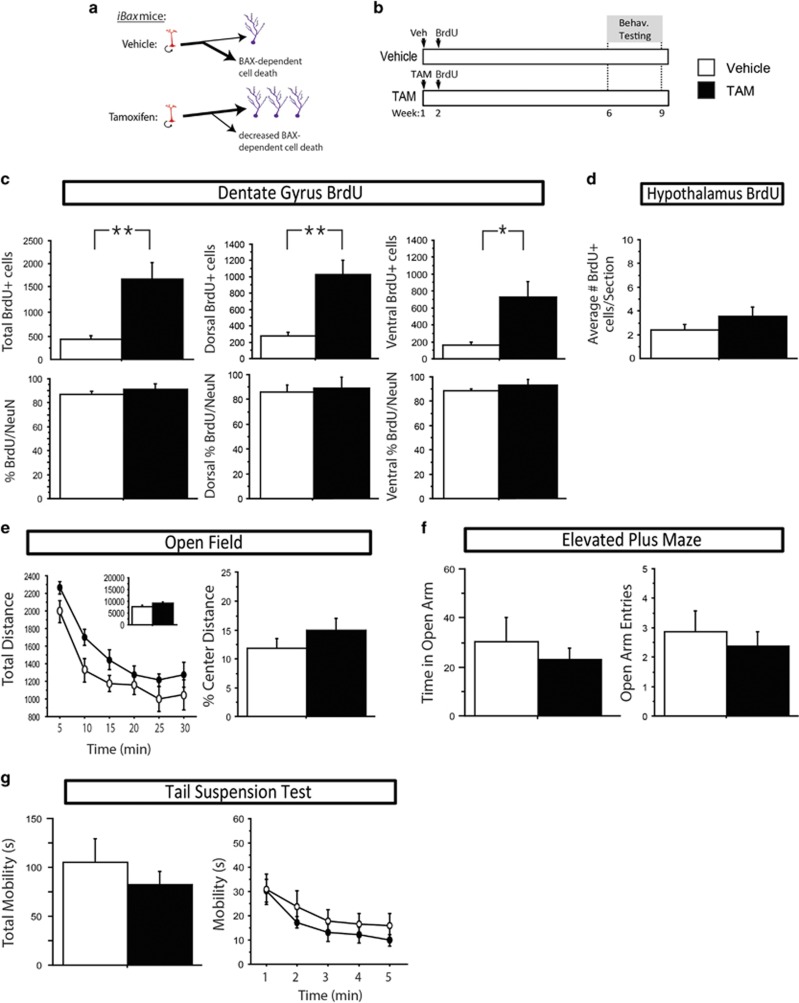Figure 1.
In the absence of stress, genetically increasing adult hippocampal neurogenesis in iBax mice increases adult hippocampal neurogenesis, but does not affect anxiety- and antidepressant-responsive behavior. (a) Schematic: vehicle-treated animals have normal levels of adult hippocampal neurogenesis where stem cells (red) can undergo symmetric or asymmetric division to produce mature granule cells (purple), however, the majority of produced cells undergo BAX-dependent cell death during maturation. Tamoxifen treatment in iBax mice prevents BAX-mediated cell death in recombined cells, leading to an increased number of adult-born granule cells. (b) Experimental timeline: iBax mice were injected with either vehicle (top line) or tamoxifen (TAM; bottom line) 6 weeks before behavioral testing. (c) TAM increases the total number of BrdU-positive cells in the dentate gyrus (P=0.007). Significant differences are seen both in the dorsal (P=0.004) and ventral (P=0.017) subregions. The majority of BrdU-labeled cells are colabeled with the mature neuronal marker NeuN, and this percentage does not differ between groups when assessed throughout the whole, dorsal, or ventral hippocampus (P>0.05). (d) TAM has no effect on the number of BrdU-positive cells observed in the arcuate nucleus of the hypothalamus (P>0.05). (e and f) Mice treated with vehicle or TAM show similar locomotion in the open field test, as assessed by total distance (P>0.05). Both groups also show anxiety-like behavior in the open field test, as assessed by percent center distance (P>0.05), and in the elevated plus maze, as assessed by time spent in the open arms (P>0.05) or open arm entries (P>0.05). (g) No differences were observed between mice treated with vehicle or TAM in depression-like behavior as observed by mobility in the tail suspension test (P>0.05). In the line graph, data is represented in 1-min bins for the duration of the test. All error bars represent SEM. *P<0.05, **P<0.01. BrdU, bromodeoxyuridine; NeuN, neuronal nuclei; TAM, Tamoxifen.

